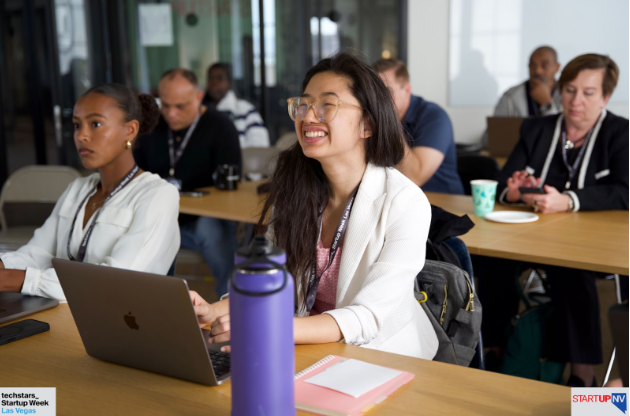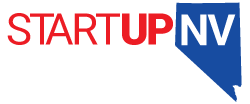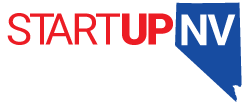Customer Discovery: Job-One for a Successful Startup

There are two paths to a startup. The first is to get an idea, develop a product, produce a product and then try to sell it. The second is to get an idea, test the market appetite, create a prototype, test the market reaction, revise, and test until you are ready to produce.
I probably don’t need to tell you that the second path is typically more successful. The better you understand your customer, their needs, and their appetite for your product, the more likely you will be to build a product people will buy. This is the path of customer discovery.
If the second path is typically more successful, why do founders choose the first path so often? There are several reasons. One reason is that founders assume that because they saw a need for the solution, others will buy it. It’s the “if you build it, they will come” model. Unfortunately, just because you want it, or think it is a good business idea, doesn’t mean that other people will spend money on it.
Product-Market Fit
Before you get too far along your startup journey, I encourage you to think about what we call product-market fit. Product-market fit is when there is a need and an appetite for a solution to a problem. It also means that your solution fills the need and is priced so that people will buy it. Solving a problem isn’t enough. You have to make sure there is a product-market fit. We do that through customer discovery.
The customer discovery process starts by understanding who has the problem you are trying to solve, how important it is, and how much they are willing to spend to solve it. If you get an answer that indicates the problem is troublesome enough that they are willing to invest to solve it, you can test your solution model with the potential customer.
You begin this customer discovery process by defining the target market you believe will want your product, developing a series of questions to understand the customer’s interest, analyzing the data, and then revising and retesting if necessary. If you believe there is more than one target market for your product, then you may need to run this customer discovery process more than one time.
4 Part Customer Discovery Process:
- Define a Target Market
- Customer Validation: Understanding the:
- Problem
- Urgency
- Appetite (Budget)
- Testing your solution
- Analyzing the Data
- Revision & Retesting
Define the Target Market
If you have an idea for a product, the next step is to think about who might use it. Don’t make the mistake of thinking “anyone” or “everyone” can use it. While that may be true, it is more helpful to think about who is most likely to have the problem you are solving and be willing to invest resources into solving it. Who do you think will be easiest to sell this to? Then, stop and think if there are other groups that might also be able to use it. Make a list of the groups of buyers. Many founders would be surprised how often companies have changed their target market when they realize that a different buyer is willing to pay more or buy it more often.
Depending on what you sell, your target customers could be moms of teenagers, accountants, or quality control specialists in labs. For example, if you’re a founder selling testing equipment, you may think that the equipment would most often be used by labs in water treatment facilities. You might discover that other labs test for similar things that could use the same equipment. Those other types of labs might be another target market.
If you are selling business-to-business (B2B), you might want to consider all the people who might be involved in buying or using the product you are selling. You may want to interview more than one type of buyer during your customer discovery.
Customer Validation
Customer Validation is the process of studying the potential buyer. There are many ways to do this. You can set up a study and have people participate, you can send out a survey, or you can do interviews. There are probably other ways to do this as well. With a new product, especially for a new founder, doing interviews is a great starting place because people will tell you things you didn’t think to ask.
Before you interview or survey potential customers, develop your customer discovery questions. Here is a link to some sample questions on customer discovery. It is important to think through the questions and test them on people before you start your interviews. You want to ensure you are asking what you mean to ask and that the questions are easy to understand and answer. You also want to ensure you are not leading them to answer in a specific way. You want honest answers.
Start by understanding the problem. (I use ‘problem’, but it could be something they want to achieve or avoid). You are assuming that people have a certain problem. First, you need to confirm that they have that problem. Next, you will want to understand how that impacts them. How much of a problem is it? Many problems don’t seem worth fixing. Other problems create other problems when you fix them. You need to understand all of this. The problem has to be bothersome enough that they are willing to suffer through the solution.
Next, understand how urgent a solution is. Is this priority 1 or 56? Do other things need to get solved before this, or in order to solve this? What is the timeline around those things? If I want a new carpet but don’t want to get it until I fix the leak in the roof and the water damage on the ceiling, the new carpet may have to wait a few weeks or months. Timing is everything.
Once you understand the timing, ask how much they will pay. Remember that the price of your product may only be part of the cost for them. If I buy makeup, I may also have to buy brushes. If I buy a new car, I must also get new insurance and register the car. So you need to understand how much they will pay for your solution plus how much else they are willing to invest.
Finally, test your solution with them. You may want to bring a prototype for them to test. Do they like your solution? What do they like or not like about your solution? Does seeing your solution change their urgency or how much they are willing to pay?
Be as consistent as you can in asking the questions. It will be hard to analyze the data if you don’t follow the same process every time. Give yourself a place to track answers not specifically asked in the questionnaire.
Analyze the Data
Compiling and understanding the data of your customer discovery is important. You can get a feel for what people say, but formally analyzing it will give you better information. If you do interviews, you can still put the answers into a program like Survey Monkey so they can analyze the data for you. Sometimes once you get the answers, you will begin to see trends. You might notice if people answered one question a certain way, they were more likely to answer a second question a specific way. You can see many trends in the data if you look for them.
Revision and Retesting
The whole point of this customer discovery process is to learn. If you are lucky, you will get through this survey, and everyone will say they love the idea and the product and they are willing to pay what you want them to pay. More likely, as you do these interviews, surveys, or tests, you will learn things that will make you rethink your product or solution. You can do a handful of customer discovery surveys and make urgent changes before you go on. Or you may get through the whole survey process and analyze the data before deciding what changes to make. However you do it, the vital thing to remember is that you are doing this to learn how to produce a product people will pay for. Remember, until people buy your product for a profitable price, you have a hobby, not a business. Your job is to develop a successful business. That means you need a product that solves a problem that people want to solve badly enough to pay for.
Product development tends to be an iterative process. In other words, you get an idea, you research the fit, make revisions, test again and keep revising and testing until you get it right.
How to Find Your Test Sample
Decide how many people you want to interview before you start. It is essential to have a big enough sample size to analyze. Talking to ten people, for example, isn’t enough to make a good business decision. I recommend talking to at least 100 people if you can swing it. You might want to do ten as phase one, then revise before you do the rest.
If possible, start with people you know well. That will give you a comfortable environment to test your survey before you try it on strangers.
Next, go to what we call 2nd level connections. Those are friends of friends or connections of connections on LinkedIn. Ask for introductions from people you know. If you have been introduced, people are much more likely to agree to the interview. Finally, you must reach out to strangers if you run out of people you know. You could use LinkedIn for this or make cold calls. Let them know you are developing a product and would like to interview them to get their feedback. Let them know how long the interview will take. If you want to, you can offer a Starbucks gift card or something like that as a thank you.
Proceed, Pivot or Punt
You must decide at several points along the way if you will “proceed, pivot, or punt.” You may make minor changes as you research, but keep moving forward with your business as planned. You may decide to pivot, meaning you will make significant changes in your product or target market. Finally, you may discover the company isn’t going to work. Maybe people don’t need to fix the problem, or there are better solutions out there, or perhaps people won’t pay enough to make the business profitable. Whatever the reason, sometimes deciding to give up is the right thing.
At various points in your startup journey, the decision to ‘proceed, pivot, or punt’ becomes crucial. Seeking advice and insights from experienced mentors, such as those affiliated with StartupNV, can offer a fresh perspective and guide you in making informed choices for the future of your business.
Even once you have a product on the market, you will likely update, upgrade or change it over time. Some products, like Coca-Cola, always stay the same, while others, like iPhones, change yearly.
Fastest Path to the Finish-line
For many founders, preparing the product for sale seems like the most direct path to success. It may be direct, but there is a huge risk of getting to the finish line without a buyer. Potential customers can be fickle and hard to understand, so customer discovery may seem like taking the long way around. There may be more twists and turns in the process, but the end result should be a product ready for a market that is willing to pay.
By Liz Heiman, CEO at Regarding Sales and StartupNV Mentor
About the Author
Liz has been helping companies with enterprise (B2B complex sales) since 1998. She started her career at Miller Heiman training companies like HP, Coca-Cola, NCR and Johnson Controls. Now she works with startups and companies in transition to build sales operating systems to support sales and growth goals. Liz will work with any company who has a B2B complex sales, but is focused on manufacturing, med tech and other tech.
Customer Discovery Questions List by StartUpNV
- Have you experienced this situation?
- Is it a problem for you?
- Where and when do you experience this problem?
- How are you currently dealing with the situation?
- How often do you experience the problem?
- How interested are you in an easier solution, on a scale of 1 to 10?
- How many others that you know experience the problem?
- How long should you have to wait for the solution to work?https://startupnv.org/customer-discovery-job-one-for-a-successful-startup/
- How much time are you willing to invest in learning the solution?
- Are you willing to pay for a better solution?
- How much are you willing to pay?
- If it is a one time solution, how often are you willing to pay for it?

